- Home
- J. M. Barrie
The Annotated Peter Pan (The Centennial Edition) (The Annotated Books) Page 4
The Annotated Peter Pan (The Centennial Edition) (The Annotated Books) Read online
Page 4
J. M. Barrie. (Beinecke Rare Book and Manuscript Library, Yale University)
Few were as close at hand as the young Peter Llewelyn Davies, and it is not much of a stretch to imagine that Peter Pan was inspired by the middle of the five sons of Arthur and Sylvia Davies, the boys Barrie adopted after both parents succumbed to cancer, Arthur in 1907, Sylvia in 1910. (The boys were born in 1893, 1894, 1897, 1900, and 1903.) After all, Peter was just a baby when the aspiring playwright began telling his older brothers, George and Jack, about an infant who escapes from his mother to dwell in Kensington Gardens. Barrie had once jotted down notes for a “Fairy Play,” about an ordinary boy who is taken in by the fairies: “Hero might be a poor boy of today with ordinary clothes—unhappy, &c, in Act I—taken into Fairydom still in everyday clothes which are strange contrast to clothes worn by the people of fairydom—(a la Hans Xian [sic] Andersen).”13 Part baby and part bird (all children were born as birds, according to Barrie), Peter Davies morphed into a boy named Peter Pan, who uses the power of flight to escape the nursery and live a carefree life with birds and fairies in Kensington Gardens.
Peter, George, and Jack Llewelyn Davies. (Beinecke Rare Book and Manuscript Library, Yale University)
But Peter Pan is also obviously far more than Peter Llewelyn Davies and the boy in Kensington Gardens. The name is a curious mix of Christian and pagan associations. The biblical Simon Peter is known as the apostle most passionate about his faith, and his story resonates with the conflict between faith and reason in Peter Pan. In Matthew 16, Jesus renames Simon and calls him Peter: founder of the church: “You are Peter, the Rock; and on this rock I will build my church, and the powers of death shall never conquer it. I will give you the keys of the Kingdom of Heaven.” Still, it is Peter who denies his relationship to Jesus three times “before the cock crows,” and he thereby becomes a figure who is both solidly faithful yet also lacking in faith. Barrie could not have found a better way to capture Peter Pan’s loyalty to Neverland, on the one hand, and his capricious, volatile nature, on the other.
If the name Peter initially provides a rock-solid foundation for J. M. Barrie’s character, whose Christian name is indeed Christian, the biblical associations are immediately tempered by the pagan “Pan.” Peter Pan has a rich mythological ancestry, with a deep kinship to figures ranging from Pan, Hermes, and Dionysus to Icarus, Narcissus, and Adonis. Like the mythical god Pan, whose name derives from the Greek word for “all,” Peter Pan is a creature of nature, associated with pastoral delights. The god, half-goat and half-human, can be benign and destructive, delightful and terrifying. Pan is, tellingly, the son of Hermes, the trickster and thief renowned for his golden, winged feet and for his mercurial nature. He belongs also to the retinue of Dionysus, with his “ecstasies innumerable,” and the terror he creates links him with that god as well. He is also the Greek god revived in the golden age of children’s literature—by Rudyard Kipling in Puck of Pook’s Hill, by Robert Louis Stevenson in “Pan’s Pipes,” and by Kenneth Grahame in The Wind in the Willows. The child who will not grow up comes to be endowed with all the pagan energy of the sylvan deity.14
One of many notebooks kept by Barrie to jot down everything from literary ideas to addresses. This entry contains the germ of the idea for Peter Pan, which was first called Fairy. (Beinecke Rare Book and Manuscript Library, Yale University)
Barrie toned down the pagan elements in the dense complexities of Peter Pan’s mythological ancestry. In early productions of Barrie’s play, Peter Pan evidently appeared onstage not only playing his pipes but also riding a goat. These undisguised references to “the chthonic, often lascivious and far from childlike goat-god” were soon removed from the play and did not find their way into the novel.15
Michael Llewelyn Davies in a Peter Pan costume. (Beinecke Rare Book and Manuscript Library, Yale University)
Barrie’s Pan is not at all like the great god Pan, represented by Kenneth Grahame in The Wind in the Willows as the mysterious Piper at the Gates of Dawn. An appealingly mischievous and charmingly elusive boy, he has his own cult following but does not inspire anything close to the awe and dread felt by Mole and Rat when they row up the river in search of Otter’s son Portly and answer the great god Pan’s “imperious summons.”
When Hook demands to know who Peter Pan is, the boy answers quickly: “I’m youth, I’m joy . . . I’m a little bird that has broken out of the egg.” Mobile and nomadic, Peter Pan is truly all things—all things to everyone. And yet he is also, as the stage directions indicate, never “touched” by anyone else. In short, he is self-contained and so determined to resist connection that he comes to embody what the narrator describes as “heartlessness,” a trait he shares with all children. He is not simply Pan but also Adonis and Narcissus—all those mythic figures, renowned for their beauty, who refuse to grow up, mature, and develop emotional attachments. And, as importantly, he is, precisely because he remains eternally young, a grim reminder that the rest of us must all grow up and one day die.
MORTAL COMBAT AND CHILD’S PLAY
Few critics have resisted the temptation to read the battle between Pan and Hook in Freudian terms, as a dramatic oedipal conflict, particularly since Hook (the evil father) and Mr. Darling (the benevolent father) are generally played by the same actor. They point out that the children fly to Neverland, encounter their father in symbolic form, and conspire with Peter Pan to kill him by proxy. There is, to be sure, real conflict between adults and children on Neverland, but, in all the battles, everyone, including the captain and the pirates, acts like a child. What seems far more significant than the overt rivalry between Hook and Pan or the children’s possible covert resentment of their father is Hook’s fear of death and Peter’s immunity to that fear—for him everything becomes “an awfully big adventure.” Hook is the only character in the work with a “dread” of crocodiles, and, when Smee predicts that the clock in the crocodile will one day run down, Hook replies, “that’s the fear that haunts me.” For Hook, death becomes alarmingly real in ways that it cannot be for those who have not yet grown up or for the boy who will never grow up.
When we were young, we could read Barrie’s play and novel with a sense of breathless anticipation: “Which of these adventures shall we choose?” With confidence in the power to navigate and conquer the world of the book, we could cheerfully accept the occasional disturbances that unsettle the playfulness of the narrative—the ticking clock, the arrow that hits Wendy, the cavalier slaying of pirates, Tink’s brush with death, and Wendy’s flirtatiousness. The critic Timothy Morris, for example, recalls that when he watched Peter Pan as a preschooler, “I didn’t get the sexuality that the play exudes. I was blissfully innocent about the images that shock me today. . . . Wendy in her nightgown, falling to earth pierced between the breasts with a gigantic rubber-tipped arrow.”16 As adults, we are more likely to feel a twinge of sorrow when we learn that the narrator can still hear the sound of Neverland’s shores yet knows that he “shall land no more.” Who will fail to think of Poe’s raven, and the mournfully relentless memento mori captured by the word “Nevermore”?
J. M. Barrie, 1911. (Beinecke Rare Book and Manuscript Library, Yale University)
Peter and Wendy is encoded with many adult matters, but children find them easy to ignore in their eagerness to follow the adventures of the Darling children. The adult content creates only minor disturbances in a rousing story about fairy dust, pirates, canine nursemaids, and mermaids. Adult readers, by contrast, are more likely to see the skulls littering the text, the many brushes with death and the constant reminder that, when children grow up, they are “done for.”
In the standoff between Hook and Peter, we have a form of mortal combat that divides adult and child, but in a manner both playful and parodic. A spirit of competition animates the two antagonists, who strut, preen, brag, show off, and parade before each other in a contest for respect. Hook and Peter are not competing for land, power, arms, or goods. Rather, they are
both invested in commanding the respect of those on the island and winning games or competitions rather than military maneuvers. In their highly stylized encounters, they are enacting the rituals of boyhood—setting up dares, challenging each other, and undertaking adventures. These are akin to many of the rituals of tribal societies in which the dare and the challenge transcend all else. To the end, Hook remains a worthy opponent, focused on good form and “not wholly unheroic.” Hook has one last “triumph” in making Peter resort to “bad form,” then he surrenders to the crocodile and “perishes.” Even Peter cries in his sleep that night.
Child readers may also be moved to tears, but they are unlikely to begin speculating about why Peter sheds tears, for they will be distracted by Hook’s missing hand, the swords flashing in battle, the leap into the waters, and the crocodile’s open jaws. Adult readers, by contrast, will speculate at a deeper level about Peter’s crying. Is it caused by the loss of a worthy opponent? Is there some small recognition that Peter is defeating a man who was also capable of feeling affection for him? Does Peter mourn human vulnerability and mortality? A remark about tears that feels trivial to children, often escaping their attention, becomes, in its stunning economy, a philosophical and psychological conundrum for the adult reader. It was Barrie’s genius to encode the story in this double fashion without drawing attention to the effort to reach both child and adult.
PETER PAN ONSTAGE
Peter Pan’s mutability becomes evident in the many adaptations, appropriations, prequels, sequels, and spin-offs of J. M. Barrie’s work. A creature who embraces miming, improvisation, and role playing, Peter Pan belongs in the theater, for it is there that he inhabits the domain of play and performance, all the while retaining his manic energy, darting in and out, changing from season to season, never contained or fully defined by mere words on a page.
When Mark Twain attended a New York performance of Peter Pan in 1905, with Maude Adams playing the lead role, he was so deeply enamored of the play that he wrote in the Boston Globe: “It is my belief that Peter Pan is a great and refining and uplifting benediction to this sordid and money-mad age; and that the next best play on the boards is a long way behind it as long as you play Peter.”17 With an impressive string of theatrical successes behind him, most recently and famously The Admirable Crichton, Barrie began writing the first lines of the play on November 23, 1903. The original manuscript, now housed at Indiana University in Bloomington, was entitled Anon. A Play. It was renamed The Great White Father, until Charles Frohman (known as the Napoleon of the theater world) took a look and urged Barrie to finish the play but with a new title. Frohman had great confidence in everything Barrie wrote—more confidence than Barrie himself had. “It will not be a commercial success,” Barrie had written when Frohman first asked about his latest work. “But it is a dream-child of mine.”18 Barrie was so eager to see the play onstage that he offered Frohman a second work, Alice-Sit-by-the Fire, to compensate for any losses incurred on Peter Pan. (Alice-Sit-by-the-Fire ran for only 115 performances before it was shut down.)
Typescript for the first scene of the 1904 Peter Pan. (Beinecke Rare Book and Manuscript Library, Yale University)
Nina Boucicault as Peter Pan. (Beinecke Rare Book and Manuscript Library, Yale University)
Frohman was enchanted by Peter Pan and not at all daunted by the challenges of staging a fantasy that required a cast of fifty playing everything from pirates and fairies to mermaids and ostriches. He could not resist describing the scenes from the play to his friends, and acted them out on the street. Frohman saw, far more clearly than did Barrie, the appeal of a play that allowed children to fly, brought wolves and crocodiles onstage, and had a father exchange places with his dog in the kennel. Barrie had the good fortune of working with famed director Dion Boucicault Jr. at the Duke of York’s Theatre. The theater, with its seating capacity of nine hundred, was the ideal size for the production, with a stage large enough to accommodate the planned special effects but not so cavernous as to destroy all sense of magical intimacy. The actors and actresses had not been perfectly prepared for what was to come. “Rehearsal—10:30 for Flying” was the notice that an astonished actress playing Wendy received, only to learn that she had to have her life insured in case of an accident.
Flying was so important a part of the stage fantasy for Barrie that he hired George Kirby of the Flying Ballet Company to improve the harnesses that were used in his dance productions by making them less visible and less unwieldy. Kirby created a completely new mechanism to be used by Peter and the Darling children, but it required special training, and cast members spent two weeks of precious rehearsal time mastering the art of taking off and landing. Stagehands began to protest the burden of trying to manage all of the mechanical gear, and a depressed man in overalls, as Barrie described him, kept popping up to announce, “The gallery boys won’t stand it!” Barrie had rewritten the ending five times, and he was still making cuts and revisions just days before the play was to open.
Satin program for the 1904 production of Peter Pan at the Duke of York’s Theatre. (Beinecke Rare Book and Manuscript Library, Yale University)
Peter Pan, or The Boy Who Wouldn’t Grow Up. A Play in Three Acts by J. M. Barrie made its theatrical debut on Tuesday, December 27, 1904. The production was shrouded in mystery, with actors and actresses sworn to secrecy. Newspapers made wild statements about what was to be onstage, including the claim (Barrie was their source) that one scene would show the birth of a fairy. The play was scheduled to open on December 22, 1904, but the challenges of staging led to a four-day delay—on the night before the show was to open, a mechanical lift collapsed, taking much of the scenery with it. No one felt ready for opening night (least of all Barrie, who spent most of Christmas Day rewriting the ending once again), and there was considerable anxiety among cast members that the play would not survive the season. But not long after the curtain went up, once the audience had been transported into the Darling nursery to witness the children’s nighttime rituals, the spell was cast. The orchestra did not even have to lead the clapping to save Tink’s life, as they had been prompted. Audience members—and most were adults, not children—burst into spontaneous applause as soon as Peter asked: “Do you believe in fairies?”
Critics felt the power surges in the theater. “Peter Pan is not so much a play as a spree,” the Morning Post declared. And the Daily Telegraph described it as a play of “such originality, of such tenderness, and of such daring, that not even a shadow of doubt regarding its complete success was to be discerned in the final fall of the curtain. . . . It is so true, so natural, so touching.”19 And in The Saturday Review, the popular essayist Max Beerbohm revealed that he understood the real wizardry at work onstage: “Mr. Barrie is not that rare creature, a man of genius. He is something even more rare—a child who, by some divine grace, can express through an artistic medium the childishness that is in him.”20 George Bernard Shaw, the other leading playwright of the era, was less generous in his praise, calling Peter Pan “holiday entertainment for children but really a play for grown-up people.”21 In private, he called the play an “artificial freak” that was being foisted on children. Androcles and the Lion, his answer to Peter Pan, ran for a mere eight weeks and is rarely revived on the stage. By contrast, in its first fifty years, Peter Pan has been performed thousands of times in England and revived every year but two—and then only because of the war.
Four portraits of famous actresses who played Peter Pan: Maude Adams, Pauline Chase, Nina Boucicault, Cecilia Loftus. (Beinecke Rare Book and Manuscript Library, Yale University)
Barrie’s timing was perfect. Queen Victoria’s patronage of the theater in the 1840s and 1850s, along with the efforts of theater owners to attract middle-class and upper-middle-class audiences, led to the transformation of London theatrical culture. With improved transportation systems in and around London, theater owners could run the same play for weeks, months, and even years on end, rather than constantly changing t
he fare to fill theater seats. On the West End playbills, J. M. Barrie, George Bernard Shaw, Oscar Wilde, and Henrik Ibsen were lifting the tone by supplanting prolific hacks such as Dion Boucicault Sr. (father of the stage manager for the 1904 Peter Pan), Tom Taylor, and H. J. Byron, who had dominated the Victorian stage with their melodramas and burlesques.
Jean Arthur and Boris Karloff make an unlikely pairing for a Broadway version of Peter Pan, with incidental music by Leonard Bernstein. (By permission of Photofest)
Over a century after his debut onstage, Peter Pan has attained iconic power in the world of children’s literature. He even has a psychological medical syndrome named after him. Webster’s New World Medical Dictionary now accepts the term Peter Pan Syndrome, coined by Dan Kiley in his 1983 book of that title to describe men who have “never grown up.” More important, Peter Pan lives on at a variety of institutional and cultural sites. He is, understandably, the patron saint of Great Ormond Street Hospital, and the main attraction in Kensington Gardens. He once cast a spell on Robert Baden-Powell, founder of the Boy Scouts, who went to see the play on consecutive nights. He has had a starring role in films—silent and sound, animated and live-action.

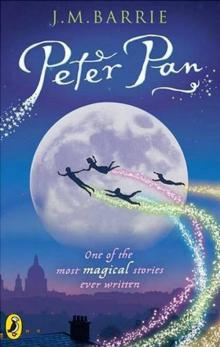 Peter Pan
Peter Pan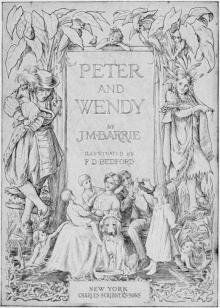 Peter and Wendy
Peter and Wendy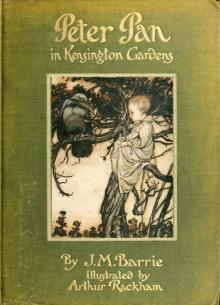 Peter Pan in Kensington Gardens
Peter Pan in Kensington Gardens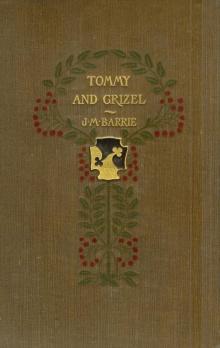 Tommy and Grizel
Tommy and Grizel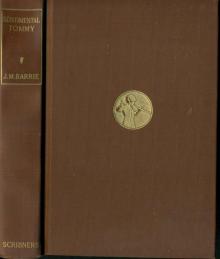 Sentimental Tommy
Sentimental Tommy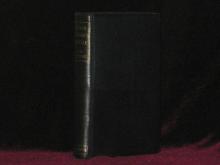 When a Man's Single: A Tale of Literary Life
When a Man's Single: A Tale of Literary Life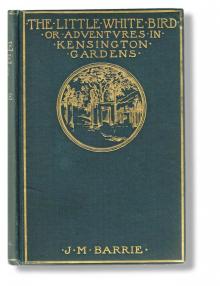 The Little White Bird; Or, Adventures in Kensington Gardens
The Little White Bird; Or, Adventures in Kensington Gardens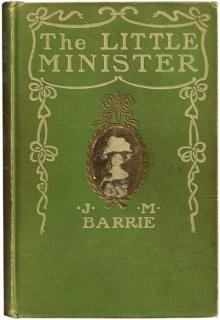 The Little Minister
The Little Minister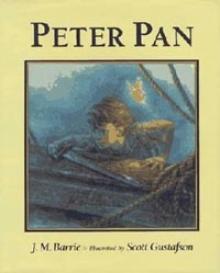 Peter Pan (peter pan)
Peter Pan (peter pan)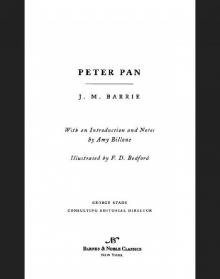 Peter Pan (Barnes & Noble Classics Series)
Peter Pan (Barnes & Noble Classics Series)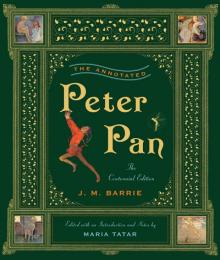 The Annotated Peter Pan (The Centennial Edition) (The Annotated Books)
The Annotated Peter Pan (The Centennial Edition) (The Annotated Books)